Are you a Quiet Speculation member?
If not, now is a perfect time to join up! Our powerful tools, breaking-news analysis, and exclusive Discord channel will make sure you stay up to date and ahead of the curve.
I like winning as much as the next guy. Maybe even more. That's why, since even before the Gitaxian Probe ban, I've brought Colorless Eldrazi Stompy to three local tournaments a week. In doing so, I've racked up more store credit than I know what to do with, and gained a reputation around Boston as the boy who never cracked a fetch. How ironic---my first competitive Modern deck was Counter-Cat, a deck that played more fetchlands than mana-producing ones (something I can assure you was controversial at the time).
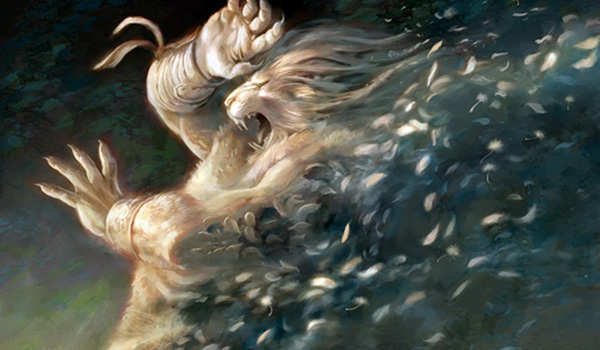
But while weeks turned to months as I exiled many openers in search of the "perfect five," my girlfriend Kelsey stuck by her Wild Nacatls. She learned to play Magic watching me pilot Counter-Cat at friendly FNMs, and barring an early stint with Jeskai Delver (I always forget new players actually have to play with Geist of Saint Traft before fully grasping how tiny it is), has played Counter-Cat for the entirety of her Magic career.
No matter the deck I'm on at a given time, Kelsey's affinity for Counter-Cat keeps me in touch with it, and keeps me tweaking it. Our latest build came about while we brainstormed ways to attack Death's Shadow Jund. Watching her pilot this build convinced me to try it out myself, and my own results in turn convinced me that Counter-Cat might actually be great right now.
The Cat's Meow
Let's start by addressing the literal elephant in the room: Wild Nacatl. The last time I brought this card up, I was thinking about integrating it into Death's Shadow Jund, where it might provide the early clock I was looking for in that deck. At the time, though, Modern was more hostile to Nacatl, and the creature didn't fit smoothly into the strategy for a host of other reasons I won't get into here.
But Nacatl is freaking bonkers right now for a few reasons that I will get into.
1. Nobody Is Playing Lightning Bolt
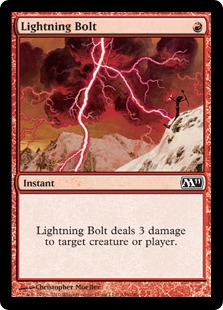 As of today, Lightning Bolt posts a 22% representation share according to MTGGoldfish. Granted, that's an improvement on its bleaker 19% share from a couple weeks ago, but it's still an unprecedented low for Modern's most historically played card. So, what's going on?
As of today, Lightning Bolt posts a 22% representation share according to MTGGoldfish. Granted, that's an improvement on its bleaker 19% share from a couple weeks ago, but it's still an unprecedented low for Modern's most historically played card. So, what's going on?
Perhaps most obviously, Fatal Push is going on. The card is great in Modern and deals with lots of threats Bolt can't touch, such as Death's Shadow and Tarmogoyf. It also allows black decks—which already enjoy another of the strongest disruption spells in the format, Thoughtseize—to reliably answer early creature plays with astounding efficiency and without needing to dip into other colors.
Bolt is also polarizing against Shadow decks, which most players have high on their radars these days. It's only impressive in this matchup for decks boasting a high degree of reversibility. These decks can sit around accruing cards and incentivize the Shadow player to burn ten life turning on its threats before getting in one hit with a fatty of their own and then ending things with a couple of domed Lightning Bolts.
Counter-Cat is one of these decks, but most Bolt decks in Modern aren't, which explains why even red-inclusive strategies like Grixis Shadow are choosing to all but abandon the iconic instant. Fortunately for us, the Kolaghan's Commands and Tarfires that replace those Lightning Bolts are pretty bad at killing Wild Nacatl, leaving only Path to Exile (woot, more mana to spend on Disrupting Shoal!) and Fatal Push (woot, one-mana spell not aimed at my two-mana Tarmogoyf!) to answer the feline at mana parity.
It's possible Bolt sees a comeback in the approaching weeks to help deal with UR Storm and Abzan Company, two successful decks in this metagame that rely heavily on creatures that flunk the Bolt Test. (Eldrazi Displacer deserves an honorable mention as yet another threat that continues to perform admirably in spite of its cost-to-toughness ratio.) But I'm counting on the Shadow decks and on faster combo decks to adapt and keep those strategies in check. Besides, Bolt isn't just going to swing back to 40% overnight.
2. Most of Modern Isn't Looking to Interact
Modern has always been a breeding ground (it's becoming increasingly difficult to use descriptive words absent from the titles of Modern dual lands) for linear decks, and today's format is no exception. UR Storm, Titan Shift, Living End, Tron, and Ad Nauseam are all players in this metagame, and running two sets of Delver of Secrets // Delver of Secrets helps loads against each one. After all, thresh strategies were invented to prey on combo. Linear decks are rarely equipped to block opposing threats, which often makes Nacatl even better than Delver (it's easier to grow).
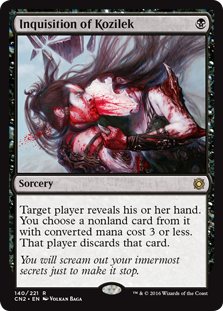 In Modern's more robust combo decks, blockers also find themselves in short supply. Abzan Company provides a fine example of Modern decks trending towards a single dimension. Here's a deck that has always claimed a decent fair game in addition to packing a combo. But with Vizier of Remedies in the format, the go-to Company builds are forsaking a grindier fair plan to dump eggs into their proverbial combo basket. This change drastically improves the relevance of turn-one, three-power clocks from its opponents.
In Modern's more robust combo decks, blockers also find themselves in short supply. Abzan Company provides a fine example of Modern decks trending towards a single dimension. Here's a deck that has always claimed a decent fair game in addition to packing a combo. But with Vizier of Remedies in the format, the go-to Company builds are forsaking a grindier fair plan to dump eggs into their proverbial combo basket. This change drastically improves the relevance of turn-one, three-power clocks from its opponents.
The reasons for this shift are simple. With Modern's reigning best deck being a hyper-efficient, triple-threat disruption machine, any kind of synergy-based strategy needs to double down on its gameplan to stand a chance of executing it. Diluting synergy plans with fair cards to pull weight in the traditionally grindy BGx matchups doesn't cut it against the archetype's new breed of leaner, faster decks.
3. The Non-Shadow Interactive Decks Don't Block
Or, at least, they don't block well. Consider, again, Abzan Company—if Vizier of Remedies or Devoted Druid are blocking Wild Nacatl, we're in okay shape. These creatures used to be Wall of Roots and Spellskite.
Similarly, gone are Wall of Omens and Restoration Angel from most builds of UWx Control. Modern's shifts to accommodate bigger beaters—Death's Shadow, Tarmogoyf, Reality Smasher—leave little room for early blockers (a major reason Burn has performed so well online).
To fulfill a similar function, players have gravitated en masse to Lingering Souls, even splashing the card into the already-three-color Shadow decks. But Lingering Souls isn't great at blocking Wild Nacatl, either. The card shines when its Spirit tokens wall something that costs a significant amount of mana, such as Tarmogoyf, for multiple turns, or when they manage to team-block and subsequently kill a larger threat. Nacatl costs just one mana and can't be killed by the spell's front or back end alone, instead requiring the full five-mana investment to make a trade. And while Counter-Cat does play Tarmogoyf as well, it also packs plenty of Hooting Mandrills, another creature that sneers in the face of 1/1 tokens.
Re-Introducing Counter-Cat
I know some readers routinely skip to the decklists in the articles they read. For the more patient among you, reading through the above 1,000 words of Nacatl adulation must have been like pacing around the kitchen, hungrily watching me open a very large can of Fancy Feast. Well, it's time to eat!
Counter-Cat, by Jordan Boisvert
Post-Ban Tweaks: Cutting Helix
Counter-Cat only played two copies of Gitaxian Probe, but the ban still shook the deck's foundations. To quote my introductory article on the deck, here's what Probe does in Counter-Cat:
- It grows an early Tarmogoyf past Lightning Bolt.
- It fuels delve.
- It flips Delver of Secrets.
- It allows us to run fewer lands.
- It gives us something to do with Snapcaster Mage for zero mana in a draw-go stalemate or an otherwise tight spot.
- It lets us know whether we should dig for protection like Mutagenic Growth before committing threats to the board.
- It provides perfect information so we know how to pace Spell Pierce, Spell Snare, Remand, and Mana Leak, as well as whether to hold up permission/removal or to increase our board presence.
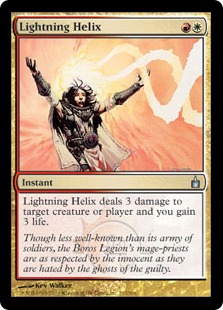 Finding one card in Modern's admittedly deep card pool that filled all these roles was a fool's errand. So we started with a pair of Sleight of Hands, which proved surprisingly serviceable.
Finding one card in Modern's admittedly deep card pool that filled all these roles was a fool's errand. So we started with a pair of Sleight of Hands, which proved surprisingly serviceable.
To be clear, losing Probe hurt the deck's consistency and decreased its proactivity (while gently improving our long-game). But without the life loss from Probe built into the deck's configuration, we were able to cut Lightning Helix, a frequently clunky card that's always been something of a necessary evil in Counter-Cat. Dropping Helix opened up the possibility of running Breeding Pool, a land that doesn't cast Boros-colored spells but has otherwise always been very appealing. Pool helps with the consistency issues created by Probe's void by improving the mana, lightening the load on our openers, and providing an extra failsafe against land destruction.
We also cut a Snapcaster Mage from the deck, although having one for utility reasons still seems beneficial. Snap is the most expensive spell in the deck, and our curve increases without Probe around. Probe also helped excuse running multiple Snaps, since we could slam the Wizard on turn two to get an extra draw when playing around enemy disruption.
Adjusting for Shadow: Adding Shoal
Kelsey had the idea of adding Disrupting Shoal for some points against Death's Shadow. Shoal performs well both offensively and defensively; it protects a pair of one-drops to help them get the job done, and it stops opponents from executing their own gameplan. The counterspell also gives Counter-Cat something to do with its occasional mid-game flood, hard-countering whatever opponents draw off the top of their decks.
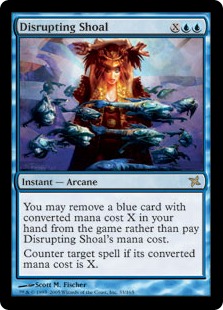 Shoal's protective function overlapped with Mutagenic Growth, which we wanted to move away from anyway. As previously stated, Lightning Bolt is experiencing record lows in representation, and the card's combat-trick dimension loses value in such a linear format. Growth is also the wrong color for Shoal.
Shoal's protective function overlapped with Mutagenic Growth, which we wanted to move away from anyway. As previously stated, Lightning Bolt is experiencing record lows in representation, and the card's combat-trick dimension loses value in such a linear format. Growth is also the wrong color for Shoal.
To hit enough blue cards and surpass the magic number 22, we added another Sleight and a pair of Thought Scours, which help with Hooting Mandrills. Scour is especially neat in Counter-Cat, since we can lead with a fetchland and represent Spell Pierce, Spell Snare, Lightning Bolt, and Path to Exile on our opponent's turn while still having access to a proactive play should they simply draw and pass.
Sideboard
We also made some significant changes to the sideboard, the biggest of which are the adoption of Engineered Explosives and Spreading Seas. The former destroys just about everything in a four-color deck, making it a great hedge against random post-board haymakers. The latter attacks Modern's increasingly precarious manabases without asking us to play a Blood Moon-resilient one ourselves. Both are stellar against Shadow decks.
Disrupting Shoal, Delver of Secrets // Delver of Secrets, and Counter-Cat's wealth of permission and removal in its 75 make sideboarding very tricky with this deck. Maintaining the right density of blue spells for Shoal, or instants and sorceries for Delver, is crucial when making between-game decisions. It's sometimes correct to completely axe one of these packages from the main 60 to enable a more dedicated permission-based or removal-based gameplan, depending on the matchup.
With Path to Exile being the only white card in the 75, Counter-Cat sometimes boards into a Temur deck featuring "Kird Ape-Plus." This plan is most common against linear combo decks and against creatureless control decks, as Spreading Seas takes care of manlands like Celestial Colonnade in those matchups. The plan also makes us nigh-impervious to Blood Moon, allowing us to shave a Destructive Revelry from the sideboard.
Comparisons to Temur Delver
I gave up on Temur Delver not too long after the Probe ban, although I did try to rekindle the strategy a couple of times. More dedicated players than I have stuck with it, employing Narnam Renegade in some number to tame Modern's cliques of fatties. In many ways, this build of Counter-Cat is strikingly similar to those newer builds of Temur Delver, except it runs Nacatl over Renegade and mainboard Paths over sideboard Moons.
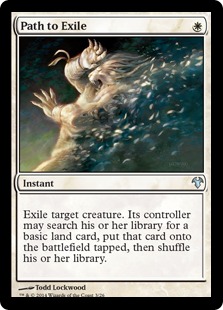 Path to Exile helps Nacatl break through, so we don't miss deathtouch so much here. In fact, I'd say Path to Exile is the biggest reason to play Counter-Cat—no, it's not even Wild Nacatl! The card removes any threat from either Death's Shadow deck, no questions asked, and ramping those decks is rarely a factor since they only play two basics. Path is also one of the few playable Modern spells that can take out a Reality Smasher or Wurmcoil Engine.
Path to Exile helps Nacatl break through, so we don't miss deathtouch so much here. In fact, I'd say Path to Exile is the biggest reason to play Counter-Cat—no, it's not even Wild Nacatl! The card removes any threat from either Death's Shadow deck, no questions asked, and ramping those decks is rarely a factor since they only play two basics. Path is also one of the few playable Modern spells that can take out a Reality Smasher or Wurmcoil Engine.
Compared with Temur Delver, Spell Pierce still gets the nod for us over Stubborn Denial. Pierce plays better with our many one-drops, as it excels against opponents on the back-foot. It's also tougher to get ferocious quickly in this deck; Mandrills is mostly a back-up plan should our one-drops get removed, and Goyf takes longer to grow without enablers like Tarfire.
Nacatl's Out of the Bag
So there you have it: my latest secret sauce. Assuming I can track down some extra Engineered Explosives, I'm excited to join Kelsey in turning everyone's favorite kitty sideways like in the grand ol' days. I encourage anyone looking for quick thrills in this uncharacteristically stable metagame to do the same.




I just wanted you all to know that I just got an email appearing to be from modern nexus about sports cards and NFL jerseys. Anyway to get rid of this?
Also, your argument that nacatl is now good because of less bolts is a logical fallacy, because it’s simply been replaced by fatal push.
It is not logical fallacy. He said that he’s glad opponents use FP on nacatls instead of goyf which it would have been in many case bolt proof anyway. If opponents use a 1 mana spell on a 2 mana creature you get tempo disadvantaged. 1 mana spell on a 1 mana creature is tempo parity. Nacatls make Goyf (your biggest creature) easier to survive.
What Mikefon said. Besides, it’s not like all the blackless red decks have suddenly dropped red for black, although some have. And besides, Bolt was often played at 4 copies because of its flexibility; Push is more common to see at 3 copies (source: mtggoldfish). And besides, many players in W or BR colors are trimming some number of heavy-duty removal (Terminate, Path) for Push, which also plays to our favor, since it means fewer cards that deal with our larger threats.
Wait so opponents now running a spell than can kill tarmogoyf makes your goyf easier to survive? Instead of the opponent running a bolt that can’t kill your goyf? Your argument actually doesn’t make any sense….
Yes, we’re aware of the weird sports card post. Our account got hacked. As of now the post is deleted, and it looks to be an isolated incident.